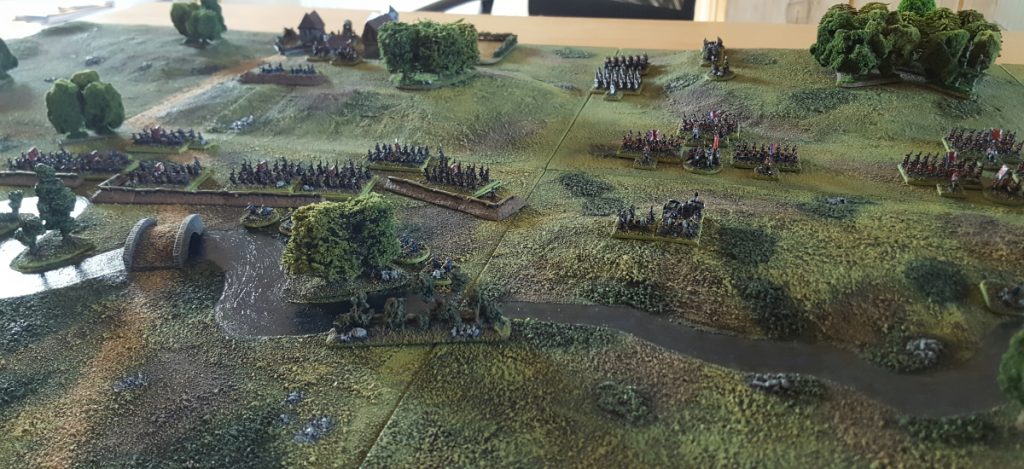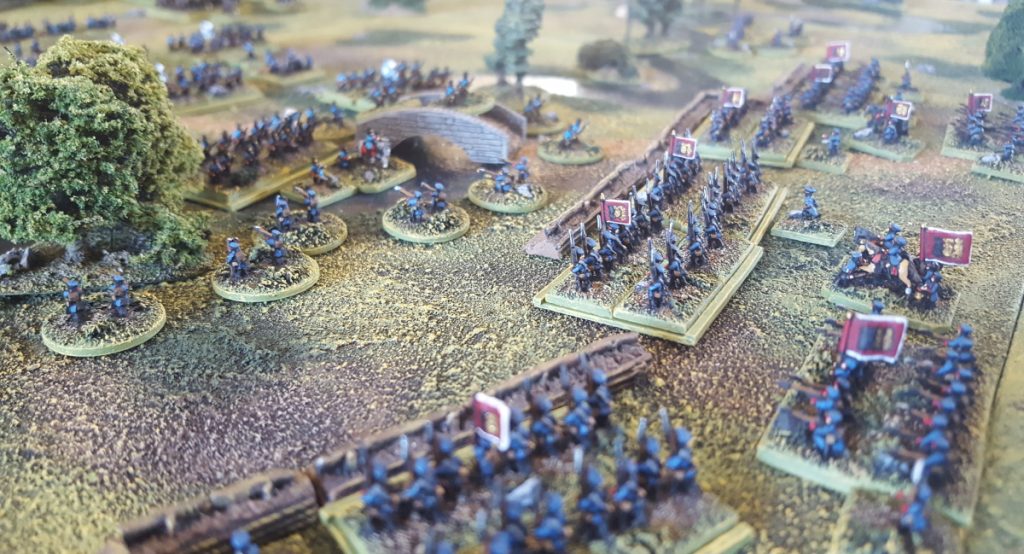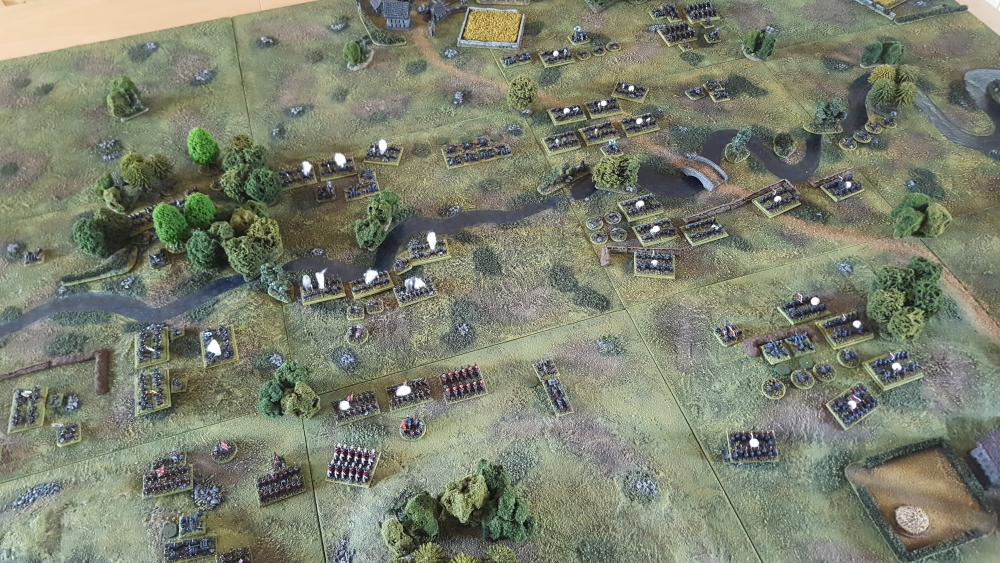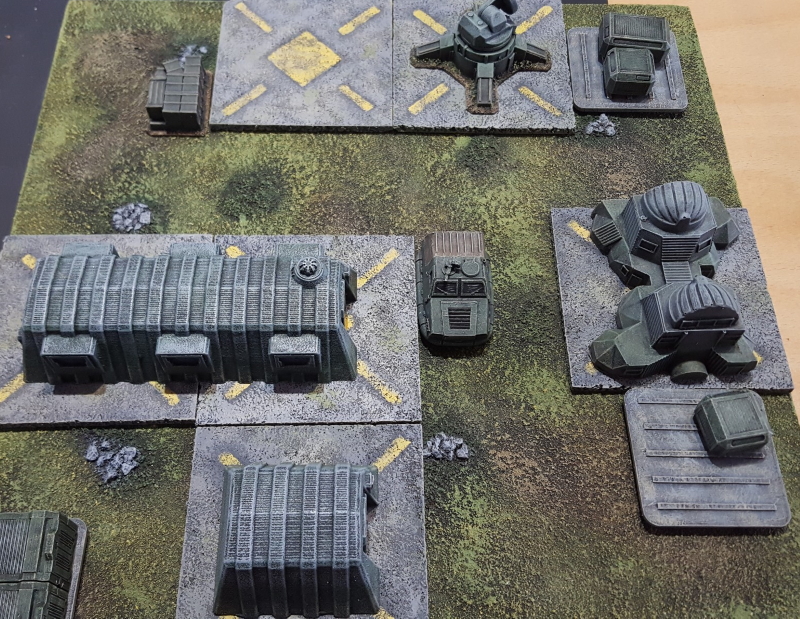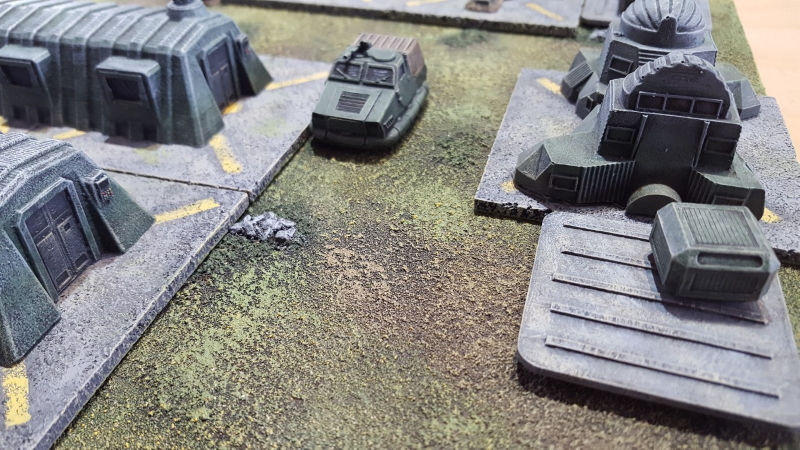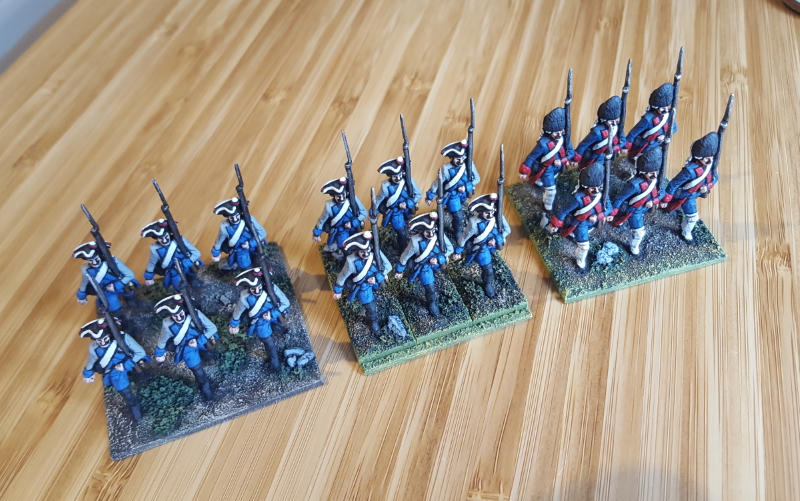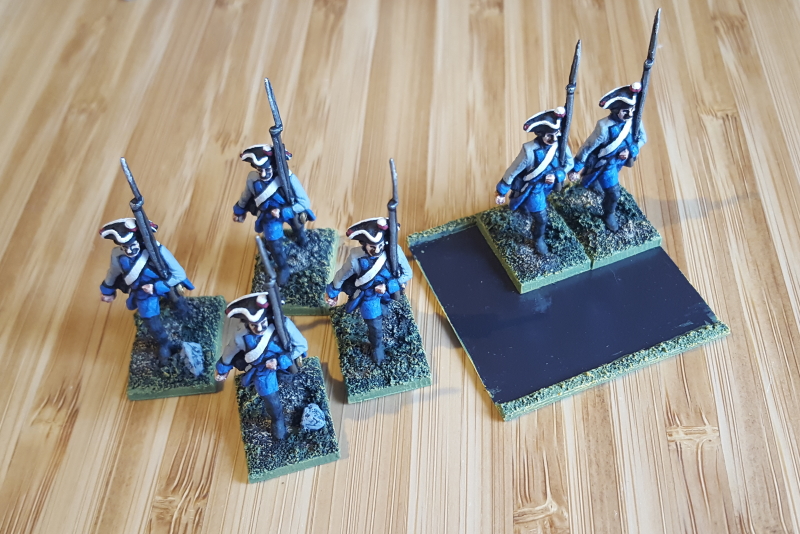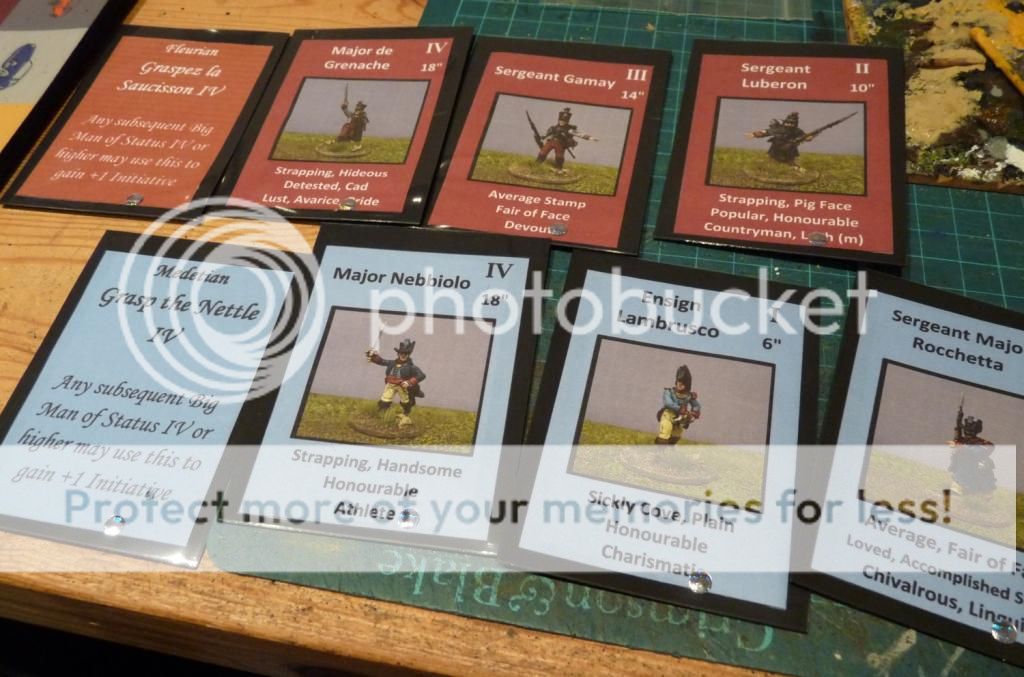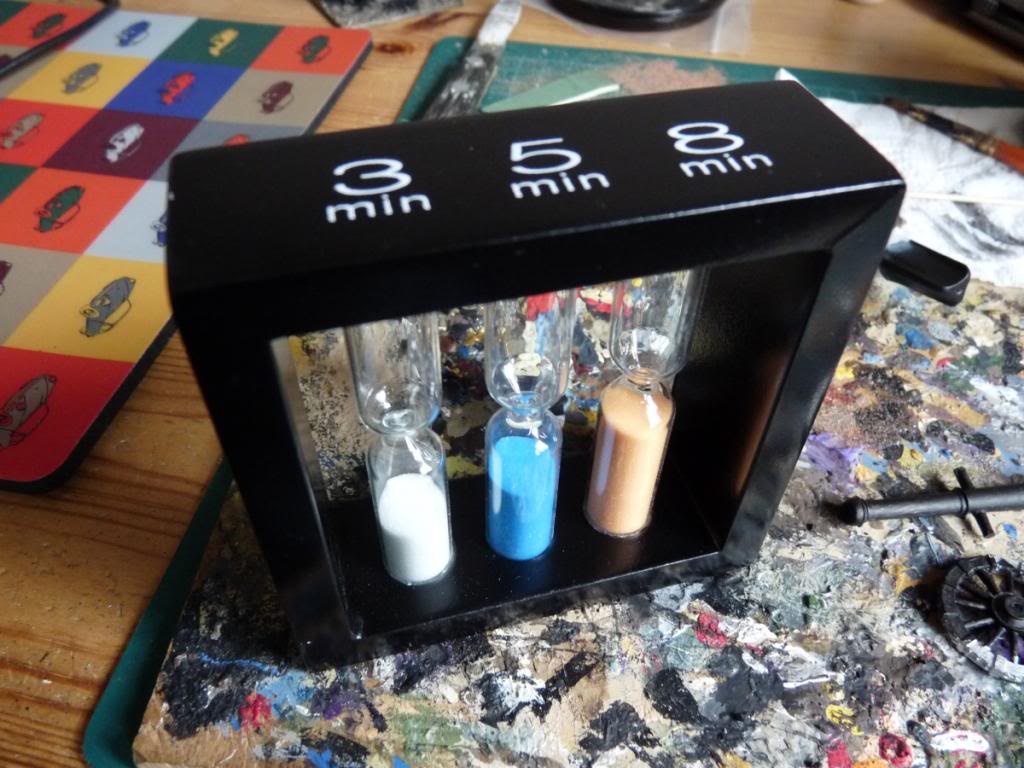Just catching up on a game played back in May, the day before the Partizan show. Count Belisarius stayed over and fancied a game of 17th century swashbuckling so I put together a table and a simple scenario (a dawn attack by Fleurians on a Medetian outpost).
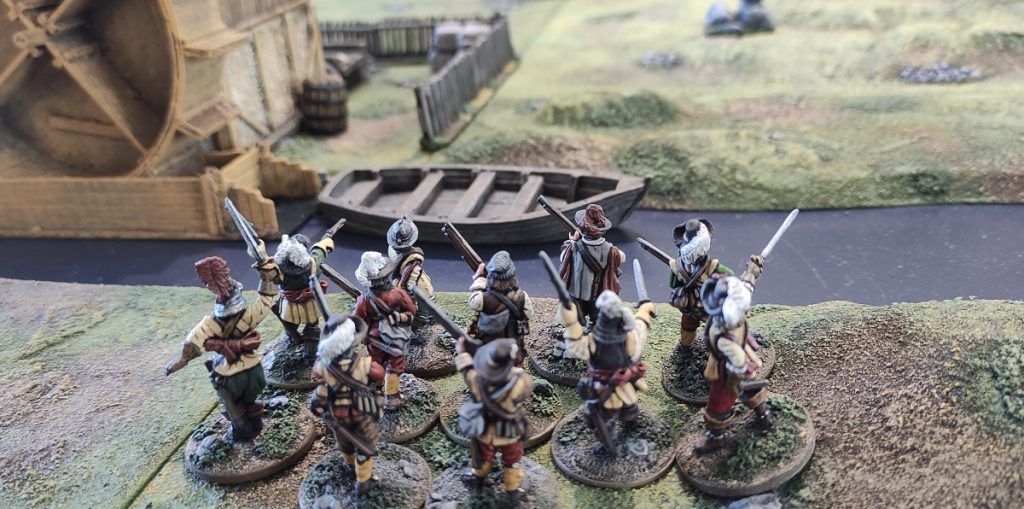
Rules were the usual Lord of the Rings/Legends of the High Seas mashup, which tend to give a relatively quick and fun game.
Here’s the table set up, with a manor farmhouse, outbuildings and mill, plus a handy stone bridge for the attackers to try to cross. The stream was shallow and could be waded across if the Fleurians decided to attack from more than one point. Andy opted to play the Medetian defenders and deployed some sentries, with the rest of his men indoors and dependent on a roll to join the fighting once the alarm sounded.

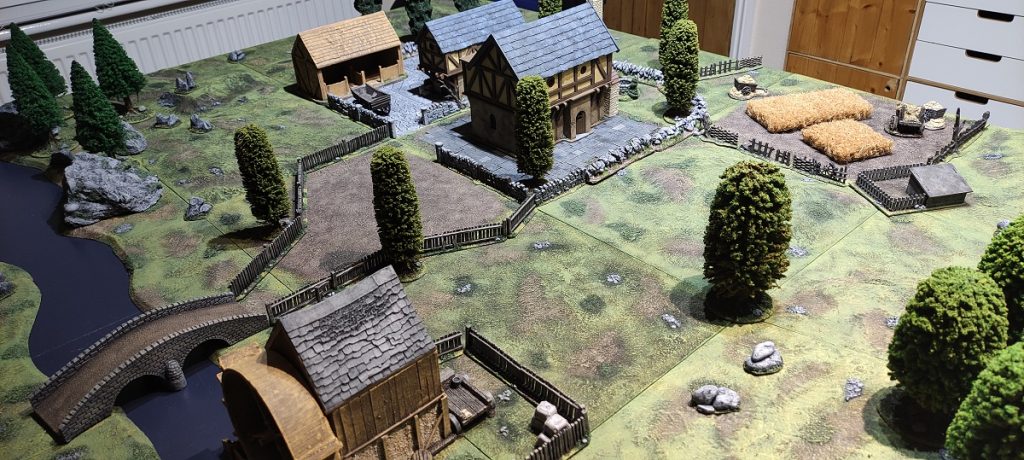

Dashing out of the early morning gloom, the Fleurian main body stormed the bridge, catching the sentries by surprise.

A second group splashed across on the right, at the mill, holding their matches high to keep them dry!

On the left, Fleurian musketmen crossed to the rocky ground, ordered to pin down Medetian reinforcements coming from the outbuildings where they were assumed to be sleeping.

The charging Fleurians shot a sentry and dashed across the bridge, straight into some withering fire from a quickly reinforced defensive line. A couple of men fell but their momentum forced the Medetians to retreat towards the manor house.

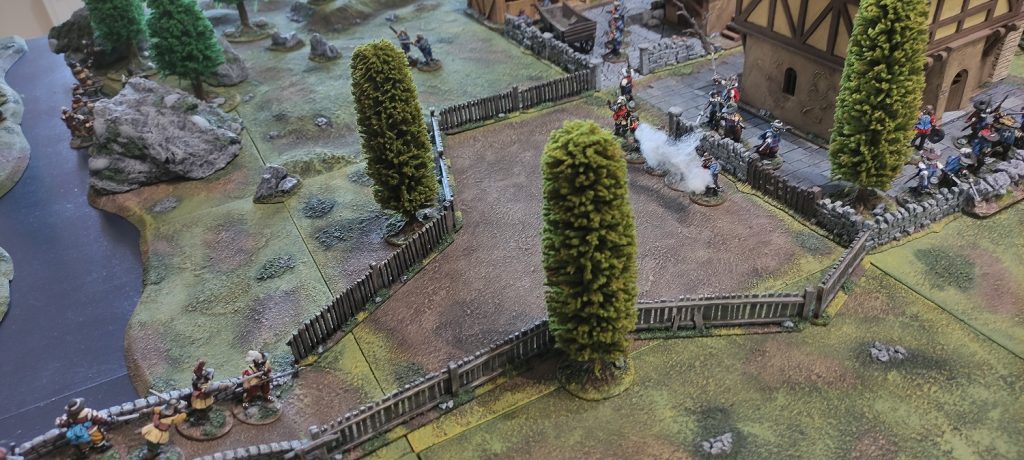
As more defenders emerged and started blazing away, the Fleurians dived for cover and returned fire. Casualties were starting to mount among the attackers, making a full-on charge extremely risky.

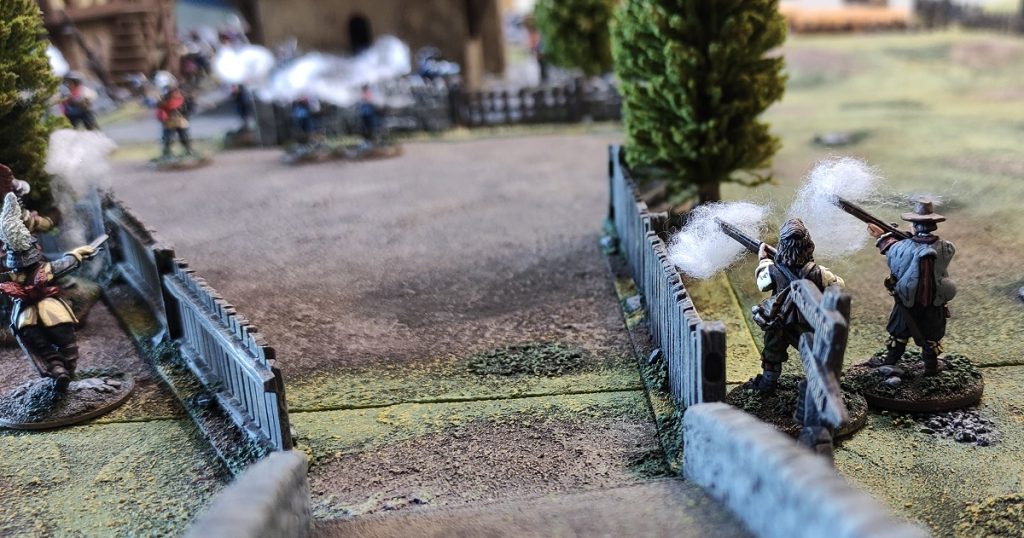
On the right the Fleurians were making better progress, and they were working their way around the flank for a better attacking position.
On the left the Fleurians waded the river and opened up, but their shooting was woeful. Perhaps their powder had gotten a bit wet… The Medetians on the other hand, nice and dry behind cover, were proving to be deadly marksmen. Shot after shot hit home and the attackers here were all but wiped out by the end of the fight.


Finally spurred back into action by the steady attrition they were suffering from the superior Medetian musketry, the Fleurians decided to charge in from all sides. Pistols were fired point-blank and swords clashed all around the farm buildings.

The Fleurian lieutenant went among the enemy like a whirlwind, cutting down Medetian swordsmen as he went – even managing to kill two in a single round. It wasn’t enough, however, as the Medetian officers were just as expert, and they were backed up by more men (thanks to the ineffective Fleurian shooting earlier). The melee ebbed and flowed, but Fleurian losses continued to mount and the end came when their captain was cut down in a vicious 3-to-1 fight (on the right in the picture below).

Seeing this the surviving attackers decided they’d done enough, and ran. The victorious Medetians let them go, and probably settled down to a pleasant breakfast while their defeated enemies made their weary way back to their own lines.
This was a very enjoyable game, even for me in the face of Andy’s awesome shooting! I probably left my big charge a bit late, but we both fancied some hand-to-hand and it did at least give me a chance to hit back at the enemy.
My thanks to Andy for being such a pleasant opponent, hopefully we’ll do this again sometime.














